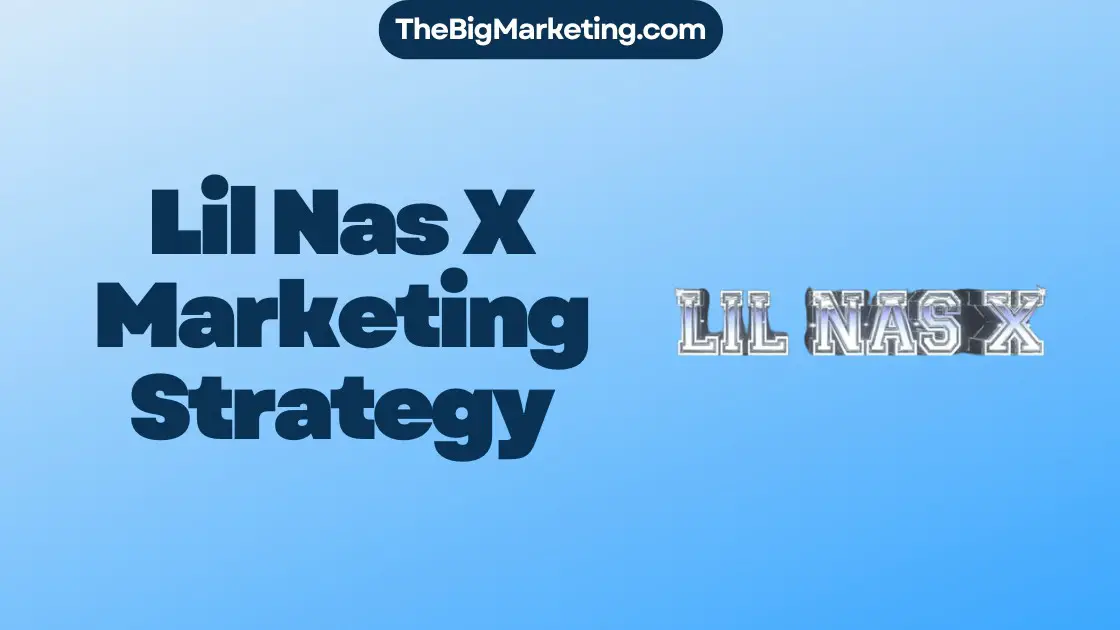The case study of Willys Marketing Strategy in 2024 provides valuable insights into their comprehensive marketing plan. This includes strategic marketing, brand strategy, digital marketing strategy, market research, advertising campaigns, competitive analysis, target audience identification, and effective marketing tactics.
Willys understands the importance of having a well-defined marketing plan to achieve their business objectives. By implementing various marketing strategies and tactics, they aim to enhance brand awareness, engage with their target audience, and drive sales growth.
In developing their marketing plan, Willys conducts extensive market research to gain a deeper understanding of their industry, competitors, and target market preferences. This market research serves as the foundation for their brand strategy and helps them identify key areas for differentiation.
Strategic marketing plays a crucial role in Willys’ overall marketing plan. They carefully analyze market trends, consumer behavior, and competitive landscapes to identify opportunities and develop strategies that align with their business goals. These strategies not only drive brand awareness but also help them effectively position their products and services in the market.
Moreover, Willys recognizes the power of digital marketing in reaching their target audience. Their digital marketing strategy focuses on leveraging online channels, such as social media, search engine marketing, and content marketing, to create meaningful connections with their customers. By utilizing these channels effectively, Willys can enhance brand visibility, drive website traffic, and ultimately increase conversions.
Willys also utilizes advertising campaigns to create impactful brand messaging and promote their products and services. These campaigns are strategically designed to resonate with their target audience and drive customer engagement. Additionally, Willys conducts thorough competitive analysis to stay ahead of the competition and ensure their marketing efforts are strategic and effective.
By implementing a comprehensive marketing plan that encompasses market research, strategic marketing, brand strategy, digital marketing, advertising campaigns, competitive analysis, target audience identification, and effective marketing tactics, Willys aims to achieve their business goals and establish themselves as a dominant player in the market.
Key Takeaways:
- Willys Marketing Strategy in 2024 includes strategic marketing, brand strategy, and digital marketing strategies.
- Market research is the foundation for Willys’ marketing plan, helping them identify key areas for differentiation.
- Willys utilizes advertising campaigns and competitive analysis to drive customer engagement and stay ahead of the competition.
- Digital marketing plays a crucial role in Willys’ overall marketing strategy, helping them enhance brand visibility and drive conversions.
- Willys aims to achieve their business goals and establish themselves as a dominant player in the market through their comprehensive marketing plan.
The Failure of Willys Chocolate Experience Event
Willys Chocolate Experience, a highly anticipated children’s event inspired by “Charlie and the Chocolate Factory,” unfortunately turned out to be a disappointing experience for attendees. What was intended to be a magical event filled with chocolatey delights and enchantment ended up being a major letdown, leaving parents and children alike feeling deceived and dissatisfied.
The event organizers heavily relied on misleading advertising, creating high expectations amongst families. The promotional materials showcased vibrant, larger-than-life depictions of a whimsical chocolate wonderland, promising an unforgettable experience for all. However, upon arrival, families were met with a stark contrast of what was portrayed, leading to a wave of disappointment.
Attendees discovered that the event failed to live up to its misleading advertising, lacking the immersive and captivating atmosphere promised. Instead of being transported into a world of chocolatey bliss, families witnessed a disorganized and chaotic setup, with long queues, limited attractions, and unengaging activities.
Additionally, the quality of the chocolate-based treats and desserts offered fell far below expectations. Promised delectable confections were subpar, lacking the taste and presentation that were advertised. This further added to the overall disappointment and frustration felt by attendees.
The negative publicity surrounding the Willys Chocolate Experience quickly spread like wildfire, resulting in a viral disaster for the brand. Disappointed attendees took to social media platforms to express their frustrations, sharing photos and accounts of their disappointing experiences. The negative online sentiment gained significant traction, leading to a tarnished reputation for Willys and a substantial loss of trust from their target audience.
It is essential for brands to prioritize transparency and honesty in their marketing efforts and ensure that the events they organize deliver on the promises made in their advertising campaigns. Failure to do so can result in significant negative repercussions, impacting brand reputation, customer trust, and ultimately, the success of future endeavors.
Factors Contributing to the Event’s Failure
Several factors can be identified as major contributors to the failure of the Willys Chocolate Experience event. Each of these elements played a significant role in the disappointing outcome, leaving attendees dissatisfied and generating negative publicity for the brand.
Misuse of a Copyrighted Concept
One of the primary issues that led to the event’s failure was the misuse of a copyrighted concept. Willys Chocolate Experience was based on the beloved story, “Charlie and the Chocolate Factory,” without obtaining the necessary rights and permissions. This violation of intellectual property laws not only resulted in legal repercussions but also damaged the credibility and reputation of the event.
Use of AI-generated Scripts
The utilization of AI-generated scripts during the Willys Chocolate Experience added another layer of complexity to the event’s failure. While AI technology can be beneficial in certain contexts, it proved to be ill-suited for crafting engaging and interactive experiences for attendees. The reliance on AI-generated scripts resulted in a lack of spontaneity and human connection, ultimately detracting from the overall event experience.
Lack of Expertise in Event Planning and Execution
An evident lack of expertise in event planning and execution also played a significant role in the event’s failure. The organizers failed to comprehend the intricate details and logistics required to successfully execute a large-scale children’s event. This lack of expertise led to various operational challenges, including poor coordination, inadequate staffing, and subpar event infrastructure, all of which negatively impacted the overall attendee experience.
Unrealistic Expectations
The presence of unrealistic expectations further contributed to the disappointment surrounding the Willys Chocolate Experience event. The organizers set lofty goals and failed to align them with the resources, capabilities, and constraints of the event. This disconnect between expectations and reality resulted in unmet promises, leaving attendees feeling disillusioned and dissatisfied.
Misleading Marketing
Misleading marketing efforts played a pivotal role in the event’s failure. The organizers relied on deceptive advertising to attract attendees, promoting an experience that ultimately fell short of expectations. This misleading marketing strategy generated negative word-of-mouth, tarnishing the brand’s reputation and resulting in a significant loss of trust among the target audience.
Lessons Learned from the Willys Chocolate Experience
The Willys Chocolate Experience event serves as a valuable learning opportunity for event planners. By examining the shortcomings of this event, we can uncover important lessons that can guide future event planning endeavors. Here are key takeaways from the Willys Chocolate Experience:
1. Realistic Event Planning
Setting realistic expectations is crucial in event planning. While it’s important to strive for creativity and innovation, it’s equally vital to ensure that the event’s scope and objectives align with the available resources, time, and budget. By carefully assessing the feasibility of ideas and considering all operational aspects, event planners can create a solid foundation for success.
2. Theme Selection
The selection of a compelling and relevant theme is essential for captivating the target audience and generating excitement. A well-chosen theme can create a unique and memorable event experience, fostering deeper engagement among attendees. It’s important to assess the theme’s alignment with the event’s purpose and the preferences of the target audience.
3. Assembling an Expert Team
Building a team of experts with diverse skill sets can significantly contribute to the success of an event. Experienced professionals in event planning, marketing, logistics, and customer service can provide valuable insights and ensure a smooth execution. Collaborating with professionals who understand the intricacies of the industry can help overcome challenges and deliver an exceptional event.
4. Prioritizing Human Input Over AI
While technological advancements have transformed event planning, it’s important to remember the value of human creativity and critical thinking. While AI can streamline processes, event planners should rely on human expertise to craft personalized and emotionally resonant experiences. Balancing technology with human input ensures a thoughtful and tailored approach to event planning.
5. Transparency and Communication with Attendees
Effective communication and transparency with event attendees are paramount to build trust and manage expectations. Clear and accurate information about the event, including its schedule, activities, and any changes, should be communicated in a timely manner. Establishing channels for feedback and addressing attendee concerns demonstrates a commitment to providing a positive event experience.
6. Effective Budgeting
Proper budgeting is crucial for event planning success. By carefully allocating resources, event planners can ensure that all aspects of the event, including venue, vendors, marketing, and attendee experience, are adequately funded. Regular monitoring and adjustment of the budget throughout the planning process enable efficient resource allocation and minimize financial risks.
Incorporating these lessons from the Willys Chocolate Experience into future event planning endeavors can help event planners create memorable and successful events. By setting realistic expectations, selecting compelling themes, assembling expert teams, valuing human input, fostering transparency and communication, and practicing effective budgeting, event planners can create extraordinary experiences that leave a lasting impact on attendees.
Willys’ Digital Marketing Strategy During the Pandemic
In response to the increased demand during the COVID-19 pandemic, Willys implemented a comprehensive digital marketing strategy to adapt to the changing landscape of the restaurant industry. Leveraging the power of technology, Willys successfully maintained its presence and catered to customer needs through innovative approaches.
To streamline the ordering process and ensure a seamless customer experience, Willys introduced a new online ordering system. This user-friendly platform allowed customers to conveniently place their orders from the comfort of their homes, minimizing in-person interactions and adhering to safety protocols.
In addition, to meet the surge in delivery demands, Willys strategically partnered with reliable delivery services. This collaboration allowed Willys to expand its reach and fulfill customer orders promptly and efficiently. By leveraging established delivery networks, Willys ensured that its food was accessible to a larger customer base, maintaining strong customer satisfaction and loyalty.
This digital marketing strategy not only met the increased demand but also positioned Willys as an industry leader in adopting innovative solutions during challenging times. The brand’s ability to adapt and embrace technology demonstrated its commitment to customer satisfaction and safety.
As a result of this strategic approach, Willys successfully navigated through the challenging landscape of the pandemic and thrived in the competitive restaurant industry. The brand’s digital marketing strategy enabled it to stay connected with its customers, fulfill their needs, and reinforce its market presence.
Key Takeaways:
- Implementing an online ordering system can enhance customer convenience and satisfaction.
- Partnering with reliable delivery services can expand the reach of a restaurant’s offerings.
- A strong digital marketing strategy can help restaurants maintain their market presence during challenging times.
Overview of Jeep’s Marketing Strategy
Jeep’s marketing strategy focuses on segmentation, targeting, and positioning to effectively reach its global audience. The brand creates a strong connection with consumers by aligning its products with the values of freedom, adventure, authenticity, and passion. Through competitive pricing, global distribution, and local production, Jeep ensures that its vehicles are accessible and available to its target market worldwide.
Segmentation plays a crucial role in Jeep’s marketing strategy. By dividing the market into distinct segments based on factors such as demographics, psychographics, and behavior, Jeep can tailor its marketing efforts to resonate with specific customer groups. This targeted approach allows the brand to deliver personalized messages and experiences, increasing the likelihood of customer engagement and brand loyalty.
Positioning is another key element of Jeep’s marketing strategy. The brand positions its vehicles as the ultimate symbol of freedom, adventure, and ruggedness. By highlighting these unique selling propositions, Jeep differentiates itself from competitors and creates a strong brand identity. This resonates with consumers who seek thrilling experiences and a sense of exploration.
Jeep’s strategic approach also includes competitive pricing, which ensures that its products remain attractive and affordable within the automotive market. By offering competitive prices without compromising on quality and performance, Jeep positions itself as a viable option for adventure enthusiasts worldwide.
In terms of distribution, Jeep adopts a global approach. The brand leverages its extensive distribution network to make its vehicles widely available in different regions and countries, allowing customers from diverse backgrounds to access the Jeep experience. Additionally, Jeep emphasizes local production in key markets, enabling the brand to cater to specific regional preferences and local regulations.
Overall, Jeep’s marketing strategy encompasses segmentation, targeting, and positioning, combined with competitive pricing, global distribution, and local production. By understanding its target audience and delivering on their desires for freedom, adventure, authenticity, and passion, Jeep establishes a powerful and recognizable brand presence in the automotive industry.
Jeep’s Marketing Campaigns
Jeep, known for its rugged and adventurous spirit, has successfully launched a series of captivating marketing campaigns that resonate with its target audience. Two notable campaigns are “Made for What You’re Made Of” and “My Jeep Story.” These campaigns effectively engage customers by highlighting their personal stories and forging a sense of community around the Jeep brand.
“Made for What You’re Made Of”
The “Made for What You’re Made Of” campaign celebrates the unique qualities and individuality of Jeep owners. It showcases real Jeep enthusiasts conquering challenging terrains and embracing their adventurous lifestyle. Through visually stunning imagery and compelling storytelling, the campaign appeals to the spirit of freedom, resilience, and passion that embodies Jeep drivers.
“My Jeep Story”
The “My Jeep Story” campaign takes a more personal approach by encouraging Jeep owners to share their own stories and experiences with their vehicles. These stories highlight the diverse ways in which Jeep owners integrate their vehicles into their lives, from off-road adventures to daily commutes. By featuring real people and their genuine connections to the brand, the campaign establishes an emotional connection with the audience.
One of the most impactful Jeep marketing campaigns was the Indian campaign, which showcased Jeep’s commitment to the Indian market. This campaign emphasized the brand’s deep understanding of the Indian landscape, culture, and people. By positioning Jeep as a vehicle that can tackle any terrain and cater to the unique needs of Indian consumers, the campaign successfully positioned Jeep as a trusted and desirable brand in the Indian market.
Jeep’s marketing campaigns, such as “Made for What You’re Made Of,” “My Jeep Story,” and their Indian campaign, effectively capture the essence of the brand and forge a strong connection with their target audience. Through these campaigns, Jeep continues to inspire adventure, individuality, and the pursuit of unforgettable experiences.
| Campaign | Description |
|---|---|
| “Made for What You’re Made Of” | Celebrates the unique qualities and individuality of Jeep owners |
| “My Jeep Story” | Encourages Jeep owners to share their personal stories and experiences |
| Indian campaign | Highlights Jeep’s commitment to the Indian market and its understanding of the local culture and terrain |
Jeep’s Social Media Marketing
Jeep, a renowned automotive brand, recognizes the power of social media platforms in reaching and engaging its target audience. By leveraging platforms like Instagram, Facebook, and Twitter, Jeep effectively implements social media marketing strategies to build brand awareness, foster customer loyalty, and drive business growth.
Connecting with the Audience
Jeep’s active presence on Instagram allows the brand to tap into the visual nature of this platform, sharing stunning images and videos featuring their iconic vehicles in breathtaking landscapes. Through captivating content and storytelling, Jeep creates an emotional connection with its audience, evoking a sense of adventure and freedom that resonates with their target market.
On Facebook, Jeep engages with its followers by sharing informative and entertaining content, including updates on new models, behind-the-scenes stories, and community-driven campaigns. The brand encourages user-generated content through contests and hashtags, fostering a sense of community among Jeep enthusiasts.
Twitter serves as a platform for Jeep to provide real-time updates, respond to customer inquiries, and participate in trending conversations. Utilizing relevant hashtags and engaging with influencers and key industry figures, Jeep maximizes its reach and establishes itself as a leader in the automotive industry.
A User-Friendly Website
Jeep understands the importance of a user-friendly website in enhancing the customer experience and driving conversions. Their website features a clean design, intuitive navigation, and easy-to-use features, making it effortless for visitors to explore Jeep’s models, access detailed specifications, and schedule test drives. The website also provides valuable resources such as vehicle configurators and financing options, empowering potential customers to make informed decisions.
| Platform | Key Features |
|---|---|
| Stunning visuals, storytelling | |
| User-generated content, community-building | |
| Real-time updates, customer engagement |
Consumer Involvement
Jeep actively involves consumers in their marketing initiatives, leveraging their enthusiasm and passion for the brand. Through user-generated content campaigns, Jeep encourages customers to share their Jeep stories, showcasing the unique experiences and adventures they have had with their vehicles. This consumer involvement not only boosts brand loyalty but also creates a sense of authenticity, as real customers become brand advocates.
Furthermore, Jeep embraces customer feedback and actively engages in conversations on social media. This openness and transparency demonstrate their commitment to customer satisfaction and allows them to address concerns, resolve issues, and build stronger relationships with their audience.
Jeep’s social media marketing efforts, coupled with a user-friendly website, enable the brand to connect with its target audience on a deeper level. By telling compelling stories, fostering a sense of community, and involving consumers in their marketing journey, Jeep successfully establishes brand loyalty and strengthens its position in the competitive automotive industry.
Jeep’s SEO and Influencer Marketing Strategies
Jeep understands the importance of implementing effective SEO strategies to increase its online visibility and drive organic traffic to its website. By optimizing relevant keywords, Jeep aims to improve its search engine rankings and attract potential customers who are actively searching for its products and services.
In addition to SEO, Jeep harnesses the power of influencer marketing to amplify its brand message and reach a wider audience. Through strategic partnerships with influential individuals and content creators, Jeep leverages their social media presence and influence to promote its products and create buzz around the brand.
Jeep’s influencer marketing efforts go hand in hand with well-executed digital PR campaigns. By collaborating with influencers, Jeep gains access to their loyal followers who trust their opinions and recommendations. This results in increased brand awareness, credibility, and potential customer engagement.
Furthermore, Jeep employs ecommerce strategies through its website to provide a seamless and user-friendly online shopping experience. By optimizing its website’s design, navigation, and checkout process, Jeep aims to convert website visitors into customers and enhance customer satisfaction.
To further enhance the customer experience, Jeep develops mobile apps that offer convenient access to its products, services, and exclusive promotions. These mobile apps not only provide users with on-the-go access to Jeep’s offerings but also facilitate customer engagement and loyalty through personalized experiences and rewards.
Jeep’s commitment to implementing effective SEO strategies, influencer marketing campaigns, digital PR efforts, ecommerce strategies, and mobile app development allows the brand to stay competitive in the automotive industry and establish a strong connection with its target audience.
| Jeep’s SEO and Influencer Marketing Strategies |
|---|
| 1. Implementation of keyword optimization for improved search engine rankings |
| 2. Utilization of influencer marketing to expand brand reach and engage with a wider audience |
| 3. Integration of digital PR campaigns to enhance brand awareness, credibility, and customer engagement |
| 4. Implementation of ecommerce strategies on Jeep’s website for seamless online shopping experiences |
| 5. Development of mobile apps to provide convenient access to products, services, and personalized experiences |
By leveraging these strategies, Jeep continues to establish itself as a leading brand in the automotive industry while effectively connecting with its target audience in a digital world.
Conclusion
Willys Marketing Strategy provides valuable insights into successful marketing strategies that businesses can leverage to achieve their goals. The case study emphasizes the significance of digital marketing, customer engagement, and brand loyalty in today’s competitive landscape.
By adopting effective digital marketing techniques, companies can reach their target audience more efficiently and maximize their online presence. This includes utilizing social media platforms, optimizing websites for search engines, and implementing targeted advertising campaigns.
Furthermore, customer engagement plays a crucial role in building brand loyalty. Businesses need to foster meaningful connections with their customers through personalized experiences, interactive content, and excellent customer service. This approach not only increases customer satisfaction but also promotes repeat business and positive word-of-mouth referrals.
In conclusion, Willys Marketing Strategy underscores the importance of embracing digital marketing, prioritizing customer engagement, and cultivating brand loyalty. By incorporating these strategies into their marketing plans, businesses can position themselves for success in a rapidly evolving marketplace.








